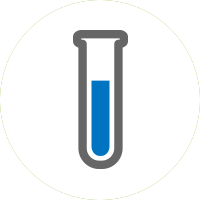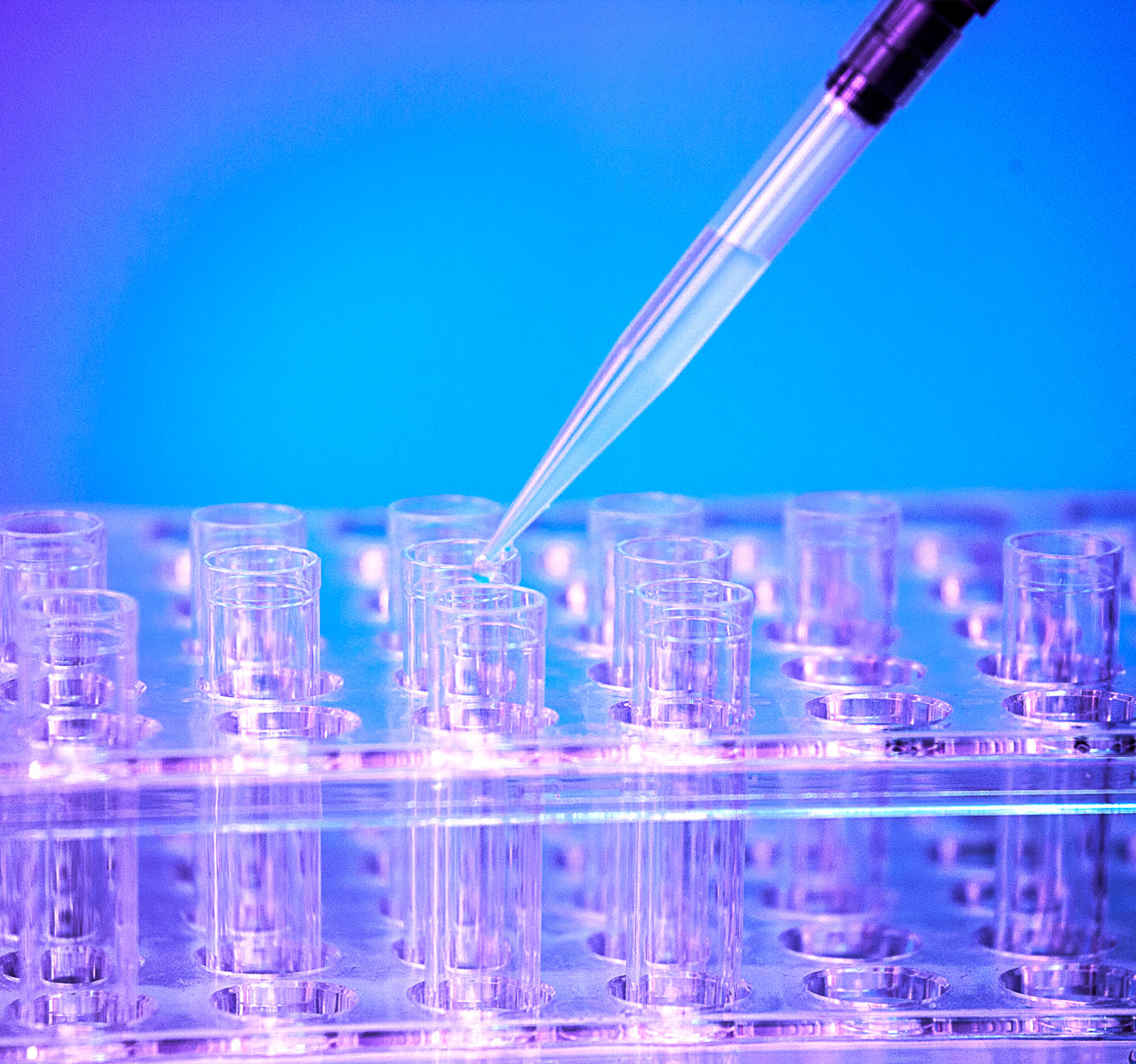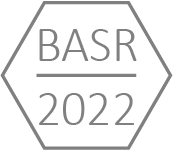Alternatives
Monkeys are similar to humans. Not only on the outside but also on the inside. That is because monkeys are genetically related to us. Due to this evolutionary relationship monkeys sometimes are a good model to study human diseases. But only if there is no other way.
Working with monkeys brings a great responsibility. We are responsible for the well-being of the animals in our colonies. We continuously seek to conduct research that does not involve animal testing in order to reduce the numbers of animals we work with. In the meantime, we accommodate and look after our monkeys with the best possible care.
We do this using the principles of the 3Rs. Refinement, reduction and replacement. Refinement and reduction go hand in hand as Refinement of an animal model will lead to a Reduction of the number of animals per experimental group.

3Rs throughout BPRC

Refinement
- Improvement of animal welfare is a continuous process in our institute. BPRC staff take part in (inter)national training programs to remain their high standards and gain new insights.
- All animals are socially housed.
- Stress is not good. It affects animals in breeding groups and can even affect the results of an experiment. In order to avoid stress you need to identify stressful events. And for that you need unbiased, objective and reliable parameters to determine stress.
- Measuring the cortisol levels in hair samples is a method that can provide stress information from an individual animal. By cutting a hair into smaller pieces you can relate the cortisol levels to potential stressful events.
- We take pictures as an objective measure for alopecia. Alopecia (hairless body parts) can be a sign for acute stress. Caretakers are trained to detect this and to take pictures. Sometimes an animal experiences stress from hierarchy in their breeding group. If that is the case behavioral scientists are notified to monitor the breeding group and if possible take measures.
- When animals are prepared for housing in an experimental setting they are introduced to a selected cagemate. We can use round the clock camera recordings to monitor their behavior in the absence of a caretaker. This avoids less-compatible pair- housed animals.
- Positive reinforcement training (PRT). We have trained 25 animal caretakers how to train their animals. They do this twice per week. With this training method we are able to perform certain biotechnical techniques without sedating the animal.
- All marmosets jump voluntarily on a scale. This way their body weight can be monitored without sedation.
- All experimentally housed animals were trained to drink from a syringe, thus voluntarily take oral medication.
- Caretakers spent 15% of their time on (cage)-enrichment. For instance assembling food- puzzels, providing animals with toys or redecorate enclosures.
- Further improvements were implemented in diet variation, to maximize natural feeding routines.
- In 2017 an improved version of the ‘Welzijnsevaluaties’ was implemented.
- New features were introduced in our monkey database for the daily registration of each individual animal.
- All animals in experiments are observed at least twice a day. During this observation different parameters are ‘scored’. Normally an animal shows a broad variety of natural behaviors. In some models for (infectious) diseases the animal’s behavior changes. This is however a subjective parameter and changes are difficult to observe. Subtle changes during an experiment can provide crucial information. In this case we prefer to measure physical activity with telemetry. These devices register X-Y-Z coordinates of individual animals. If necessary it is also possible to measure body temperature, heartrate, blood pressure. This will lead to further refinement of our animal models.
Reduction
Optimizing and standardizing in vitro laboratory tests play an important role in the reduction of the animals we work with. Also in 2018 we have implemented new techniques. By using these new conditions, we aim at less variation in laboratory tests that will lead to smaller group sizes in our animal experiments.
Genetics
Genes play an important role in infections and diseases. We have implemented new techniques to determine the genetic background of animals in the breeding and experimental colonies. This enables us to select (or deselect) appropriate animals to answer particular research questions. For example; we know that certain genes play a role in the development of AIDS after HIV infection. We now know that these genes are also present in monkeys. Selection of animals for an HIV experiment is therefore based on these genes. Proper selection reduces the variation in an experiment and therefore smaller group sizes are required to obtain statistical significant differences.
Statistics at BPRC
One of the hallmarks of good science is statistics. Not only at the end of a proof on concept study to determine whether an HIV-vaccine was successful but also during the design of the study. Therefore, good statistics is part of the 3Rs.
Statistics is often used to determine whether differences in study outcomes are (statistically) significant. This is normally done by rejecting or accepting the null hypothesis, where the null hypothesis states that treatment does not have a significant effect. To do so, the p-value is calculated. If the p-value is below 0.05, the chance that the study outcome arose by chance is smaller than 1 in 20. In that case, the null hypothesis is rejected, supporting the alternative hypothesis that the observed difference was due to the treatment.
But statistical testing is only informative if the study is properly designed. If group sizes are too small a real difference may not be detected and the study will not be informative. If group sizes are large differences will be detected, but at the cost of too many animals.
Therefore study design involves, amongst other things, also a so called “power calculation”. The number of animals per group is calculated based on the desired effect of the treatment on the primary outcome (e.g. diseased or not-diseased), the between-animal variation of the treatment effect and the desired power. The desired power is the chance that a real difference, if present, is detected. This is usually set at 80% (i.e. 80 out of 100 studies will yield significant results). Next to the power calculation, the study design also involves methodological topics like randomization of the animals (treatments are allocated by chance) and blinding of observers (treatment is not known). Next to the power analysis, a statistical analysis plan is written before the study is performed. Because monkey studies are often the last step before testing in humans, monkey studies should be designed, performed, analyzed and reported in a similar fashion as clinical trials in humans.
PET-CT
Positron emission tomography–computed tomography (PET-CT) is a visualization technique that combines anatomic localization (X-ray) and functional imaging (nuclear medicine). In hospitals, PET-CT is already widely used during the diagnosis and treatment of cancer. Over the last years, PET-CT also proved its additional value to biomedical research with animals.
PET-CT offers many advantages over traditional techniques. First, PET-CT is minimal-invasive. Second, as results from blood tests, biopsies/swabs or cells washed out of the organ of interest can be indicative for infection, they are often poor indicators for actual disease manifestations. Besides biopsies only provide information of the tissue in the biopsy but often not of the entire organ. The combination of X-ray and specific radioactive probes allows screening of the entire body in both an anatomical and functional way. This minimizes the discomfort of the animals and provides you a much broader view.
In addition, PET-CT offers the opportunity to visualize disease progression or therapeutic response over time (longitudinal). This is particularly relevant when critical organs need to be studied, like lungs or brains. PET-CT in combination with 18F-Fluorodeoxyglucose (FDG) as imaging agent is well-established used for about 90% of the PET-CTs obtained in human. FDG visualizes the glucose metabolism in the body and shows increased signal in areas with an increased metabolic activity. Increased metabolic activity can be due to cancer, infection/inflammation though also after a surgery in the area where a scar is healing. This makes FDG PET-CT highly sensitive for detecting for instance tuberculosis and influenza in the lungs.
BPRC already started to use PET-CT in 2017. Initially only in our tuberculosis research but currently we are applying this state-of-the-art technique also in other research programs like influenza. With this, PET-CT is not only leading to new and more extensive scientific insights though also increasing the translational value of our animal models as PET-CT is a well-accepted imaging method in humans.
Replacement
In 2009 BPRC-researchers developed a new in vitro assay to test drugs for its anti-malaria activity. This assay replaces the use of monkeys. Last year we tested 33 new potential anti-malaria drugs with this assay. Before 2009, 33 monkeys would have been necessary to test these 34 compounds. So far, BPRC tested 999 drugs with the animal-free assay.
TO TOP ^ << HOME
3Rs Alternatives Unit BPRC

At BPRC, we are fully aware of our responsibility to animals and society. We use animals for our research only to study essential questions around serious and life-threatening diseases for humans and when these questions cannot be answered with non-animal methods or with animals other than monkeys.
Alternative methods are categorized along the principle of the 3Rs of Replacement Reduction and Refinement, all of which have a place within BPRC. BPRC is committed to the implementation of the 3Rs and is actively involved in the development and implementation of 3Rs methods. The 3Rs are implemented in the research of every department.
BPRC is currently restructuring the Alternatives department to be able to respond even better to developments in the field of alternatives and implementation of the latest techniques. Recently, a new Head of Department has been appointed. She will be the connecting person for the different activities of the various departments regarding alternatives and be actively involved in the development and implementation of new methods in this rapidly developing research field.
TO TOP ^ << HOME

